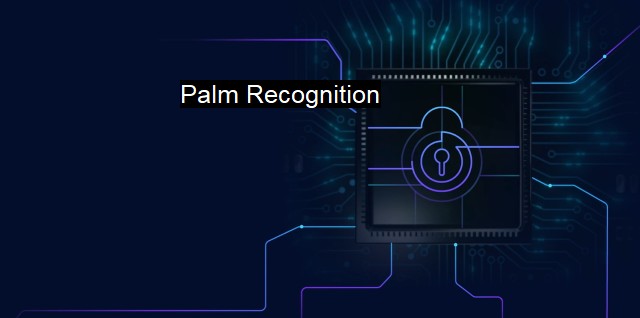What is Palm Recognition?
Enhancing Cybersecurity with Palm Recognition: The Uniquely Secure Biometric Identification Technology
Palm recognition is an emerging biometric identification technology that is rapidly gaining popularity in the domain of cybersecurity and antivirus. It refers to the process of scanning an individual's palm print and verifying it against a pre-established database containing the biometric data of authorized users. The technology is based on the concept of uniqueness and distinctiveness of human palm prints and provides an efficient and reliable way to identify individuals without the need for traditional security measures like passwords, tokens or keys.Palm recognition is considered one of the most secure and accurate biometric systems, and therefore, it is widely used in high-security areas and applications that require strong authentication protocols. The technology works by capturing the Palm prints using cameras, sensors, and other imaging devices and creating a precise digital representation that can be compared against a database of known palm prints. The mathematical algorithms used in the technology ensure that the pattern matching is accurate and reliable, and the probability of error is minimal.
Unlike passwords or cryptographic keys, which can be compromised or stolen, palm prints are unique and difficult to replicate. Therefore, palm recognition is more secure than other identification methods commonly used in cybersecurity and antivirus applications. It eliminates the risks posed by fraudulent activities, such as identity theft, hacking, phishing, and other cyber crimes. Palm recognition technology can help enhance cybersecurity by identifying and weeding out unauthorized access to critical information systems, databases and networks.
Another significant advantage of palm recognition is that it requires minimal physical contact compared to other biometric authentication mechanisms, such as fingerprint recognition. Palm recognition does not require direct skin contact, which decreases the risk of virus, bacteria, or other harmful pathogens' transmission. Therefore, it is a more hygienic identification technology, which helps improve public health control, especially in the post COVID-19 world.
Some of the typical applications of palm recognition in cybersecurity and antivirus include access control to secure facilities, authentication for online shopping, financial transactions, mobile applications, and biometric identity verification in airport security, law enforcement, and border control. Palm recognition is particularly useful for sensitive applications of financial institutions, government agencies that handle critical information and protect national security assets, and healthcare facilities that require patient identification while minimizing contact, such as diagnostic centers. The technology is continuously evolving and developing more advanced application use cases, such as palm-based lie detectors that can detect subtle physiological traits and suggest deception.
Like any other biometric technology, palm recognition has its limitations and potential vulnerabilities that need to be addressed to avoid exploitation by cyber-criminals. Since palm recognition is relatively new, hackers and cybercriminals may find exploits and vulnerabilities that the manufacturers are unaware of. Attacks on palm recognition technology can come from physical intrusion, hacking, or malware-infected devices that can compromise the accuracy and security of the palm prints captured. there are concerns over the privacy and ethical implications of using biometric technologies as sensitive data regarding palm prints can be at risk of unauthorized access and misuse.
Conclusion
palm recognition is one of the most efficient and secure biometric authentication technologies that has emerged in recent years, gaining popularity to enhance cybersecurity, antivirus and public health. The speed, accuracy and minimal physical contact required have already opened doors for new types of high security applications and authentication. Although precautions must be taken against any possible vulnerabilities, improvements in palm recognition technology could be become an everyday part of our lives in the not-so-distant future.

Palm Recognition FAQs
What is palm recognition and how does it enhance cybersecurity?
Palm recognition is a biometric authentication technology that uses the unique physiological attributes of an individual's palm to verify their identity. This technology enhances cybersecurity by providing an additional layer of security that is difficult to replicate or hack.Why is palm recognition a better alternative to traditional passwords and PINs for antivirus protection?
Passwords and PINs can be easily guessed or stolen, whereas palm recognition is a more secure and reliable method of authentication. By using palm recognition, antivirus protection can be enhanced, and the risk of unauthorized access can be mitigated.Is palm recognition accurate and reliable?
Yes, palm recognition technology has a high level of accuracy and reliability. It uses advanced algorithms and sensors to capture and analyze the unique characteristics of an individual's palm, making it difficult to duplicate or forge.What are the potential privacy concerns associated with palm recognition technology?
The biggest privacy concern with palm recognition technology is the storage and use of biometric data. It is important for organizations to properly safeguard and protect this data to prevent it from being used for nefarious purposes. Additionally, individuals should be aware of their rights and ensure that their biometric data is only used for legitimate purposes.| | A | | | B | | | C | | | D | | | E | | | F | | | G | | | H | | | I | | | J | | | K | | | L | | | M | |
| | N | | | O | | | P | | | Q | | | R | | | S | | | T | | | U | | | V | | | W | | | X | | | Y | | | Z | |
| | 1 | | | 2 | | | 3 | | | 4 | | | 7 | | | 8 | | |||||||